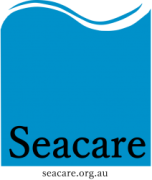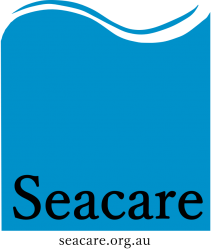Aerial surveys of giant kelp (Macrocystis pyrifera) from Musselroe Bay to Southeast Cape, Tasmania, 2019
An aerial survey of giant kelp (Macrocystis pyrifera), was carried out on the east coast of Tasmania from Musselroe Bay to Southeast Cape. This survey represents part of a series of similar surveys, with historic aerial surveys having been conducted in 1986, 1999 and 2009. This survey was conducted via light aircraft in Nov-Dec 2019, and recorded areas of visible surface canopy cover of giant kelp. Canopy areas were scribed in-flight onto 1:50,000 topographic maps (TASMAP 2017), and complimentary photo and video footage was collected. Canopy areas were digitised with reference to photo, video and map data within QGIS 3.4, and boundaries were checked against Seamap Australia seafloor habitats (Lucieer et al. 2017) and bathymetric data (Smith 2016). Each bed was attributed a broad and fine scale location, density and reliability estimate (see attached report for details).
This survey was completed with funding from Pennicott Wilderness Journeys, Tassal and IMAS, and equal in-kind support by Marine Solutions and Seacare Inc.
Simple
Identification info
- Date (Creation)
- 2020-05-11
Principal investigator
- Credit
- Pennicott Wilderness Journeys
- Credit
- Tassal
- Credit
- IMAS
- Credit
- SeaCare Inc.
- Credit
- Marine Solutions
- Status
- Completed
Custodian
- Topic category
-
- Biota
Extent
))
Temporal extent
- Time period
- 2019-11-30 2019-12-19
- Keywords (Theme)
-
- Climate change impact
- Keywords (Taxon)
-
- Macrocystis pyrifera
- M. pyrifera
- Global Change Master Directory (GCMD) Earth Science Keywords Version 8.0
-
- EARTH SCIENCE | OCEANS | MARINE ENVIRONMENT MONITORING
- EARTH SCIENCE | BIOSPHERE | AQUATIC ECOSYSTEMS | BENTHIC HABITAT
- EARTH SCIENCE | BIOSPHERE | AQUATIC ECOSYSTEMS | MARINE HABITAT
- EARTH SCIENCE | BIOLOGICAL CLASSIFICATION | PLANTS | MACROALGAE (SEAWEEDS)
- EARTH SCIENCE | BIOLOGICAL CLASSIFICATION | PLANTS | MACROALGAE (SEAWEEDS) | BROWN ALGAE
- Australian and New Zealand Standard Research Classification (ANZSRC): Fields of Research
- Keywords (Discipline)
-
- Temperate Reef
- AODN Platform Vocabulary
- AODN Discovery Parameter Vocabulary
Resource constraints
- Classification
- Unclassified
Resource constraints
- Use limitation
- The data described in this record are the intellectual property of Marine Solutions Pty Ltd, and the Institute for Marine and Antarctic Studies, University of Tasmania.
Resource constraints
- Linkage
-
https://i.creativecommons.org/l/by/4.0/88x31.png
License Graphic
- Title
- Creative Commons Attribution 4.0 International License
- Website
-
https://creativecommons.org/licenses/by/4.0/
License Text
- Other constraints
- The citation in a list of references is: citation author name/s (year metadata published), metadata title. Citation author organisation/s. File identifier and Data accessed at (add http link).
- Language
- English
- Character encoding
- UTF8
Content Information
- Content type
- Physical measurement
- Description
- Presence and density of Macrocystis surface canopy
Identifier
Distribution Information
- OnLine resource
- DATA ACCESS - Macrocystis areal extent and survey track files 2019 [.zip direct download]
- OnLine resource
-
SHAPE-ZIP
DATA ACCESS - Macrocystis areal extent 2019 in Shapefile format
- OnLine resource
-
imas:Macrocystis_aerial_surveys_2019
MAP - Macrocystis areal extent (aerial surveys) 2019
- OnLine resource
-
imas:Macrocystis_aerial_surveys_2019_TRACKS
MAP - Macrocystis aerial survey tracks 2019
Resource lineage
- Statement
- Aerial surveys were conducted over two separate days. The first survey was on the 31st November 2019 and covered the SE Tasmanian coastline south of Cambridge Airport (South Arm, Derwent River, Bruny Island and D'Entrecasteaux Channel). The second survey was conducted on the 19th December 2019 and covered the Tasmanian coastline north of Cambridge airport as far as Musselroe Bay, including the Tasman Peninsula. Surveys were carried out with Par Avion in a Cessna 206 with the doors removed on the left-hand side. Cruising speed was on average 197 km/hr at an elevation averaging approximately 200 m above sea level. Tides were between 0.4 m and 1 m for all surveyed areas. Photographic and video footage of Macrocystis pyrifera canopy were captured using time-synced devices. A Canon 600D with a 18-210mm lens was used for photos and a Sony NEX-5 for video. Both devices had a polarizing lens. These devices were also time-synced with a handheld Garmin 73 Marine GPS tracking the flight path. One surveyor was seated in the front scribing canopy locations onto 1:50,000 topographic maps (TASMAP 2017). Canopy areas were digitised with reference to photos, videos and map data within QGIS (QGIS 2019) and using a Google Satellite 2019 base layer. Each bed was attributed a broad and fine scale location, density and data reliability estimate (see below). The Region was classified based on exposure and influence of the East Australian Current. Seamap Australia seafloor habitats (Sanderson et al 2001, Lucieer et al. 2017) and bathymetric data (Smith 2016, Lucieer 2007) were also used for reference to verify canopy boundaries. Two sections of the coast (upper Great Oyster Bay and Mercury Passage) were surveyed by boat, so the flight path did not include these areas. Attributes: IMCRA MESO = IMCRA bioregion e.g. Freycinet REGION: 1 of 5 smaller regions classified based on exposure and influence of east Australian current East coast = Musselroe Bay to Cape Bernier Tasman Peninsula (eastern coast) = Cape Bernier to Tasman Island Storm and Frederick Henry Bays = Tasman Island to Cape Bruny Derwent River and D'Entrecasteaux Channel = Derwent River (north of a line from Iron Pot to Dennes Point) and D'Entrecasteaux Channel (Dennes Point/Tinderbox south to a line between Rossel Point,Southport, to Cape Bruny) South = Rossel Point, Southport, to Southeast Cape. LOCATION = Specific location within Tasmania e.g. St Helens Point DENSITY: Sparse = Scattered individual algae. Medium = Regularly spaced but individuals still identifiable Dense= Individuals not identifiable RELIABILITY: A = Accurate to within 20 m, bed edges well defined B = Accurate to within 20 m, bed edges not well defined C = Estimate of extent and position only D = Unsure if bed exists (see results for specific explanations)
- Hierarchy level
- Dataset
- Hierarchy level
- Dataset
Platform
Identifier
- Code
- research aeroplane
Metadata
- Metadata identifier
- f0904e61-2e15-4346-bb0e-638366b7e626
- Language
- English
- Character encoding
- UTF8
Point of contact
- Parent metadata
Type of resource
- Resource scope
- Dataset
- Metadata linkage
-
https://metadata.imas.utas.edu.au/geonetwork/srv/eng/catalog.search#/metadata/f0904e61-2e15-4346-bb0e-638366b7e626
Point of truth URL of this metadata record
- Date info (Creation)
- 2020-10-07T15:28:16
- Date info (Revision)
- 2020-10-07T15:28:16
Metadata standard
- Title
- ISO 19115-3:2018
Overviews


Spatial extent
))
Provided by

 IMAS Metadata Catalogue
IMAS Metadata Catalogue